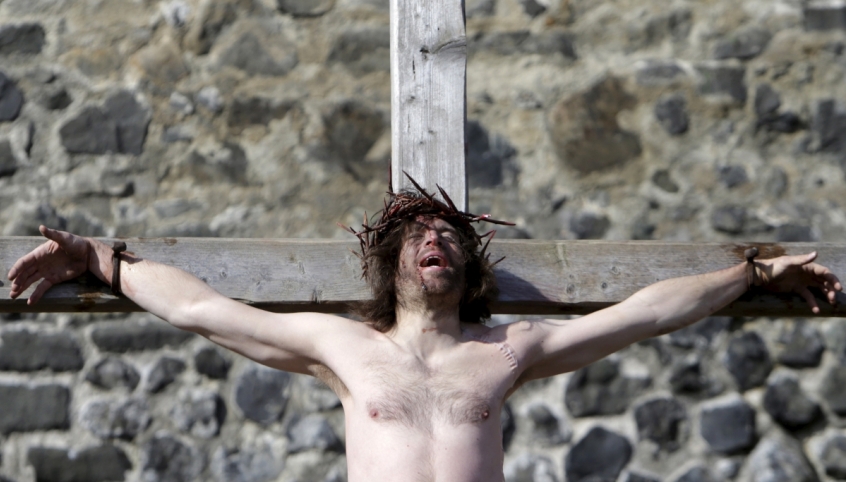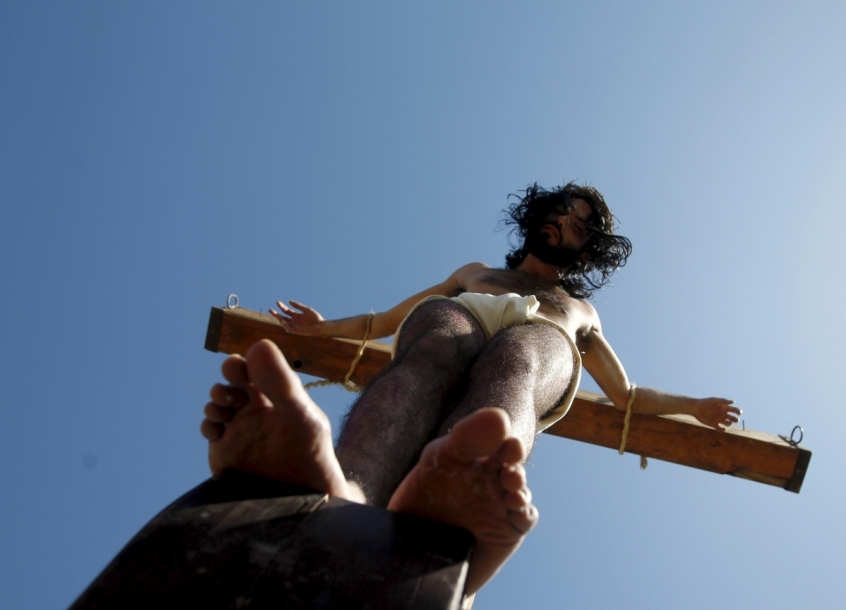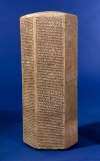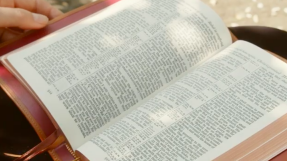
It's Good Friday, when we remember the crucifixion of the Lord Jesus Christ. We know what happened: he was fastened to a cross with nails that pierced his hands and his feet, and died after hours of torment.
At least, that's what we think happened. In the Gospel accounts of the moment of crucifixion, what happened is not described. We're just told "he was crucified". And while it was an appalling punishment by any standard and however it was done, "crucifixion" doesn't necessarily mean what we think it means.
According to John Dennis in Dictionary of Jesus and the Gospels it was designed to humiliate and was violent, sadistic and cruel. While the Romans didn't invent crucifixion – it was practised by the Persians, Assyrians, Indians, Celts, Britons and Carthaginians, among others – they embraced it enthusiastically. Varrus, the Roman governor of Syria, crucified 2,000 Jews, and Jews were crucified in the amphitheatre of Alexandria for the amusement of the population. Cicero called it supplicium servile, the punishment of slaves. A Roman citizen would not be crucified.

But the word itself refers to an upright pole or stake, to which the victim could be tied or nailed – or on which he or she could be impaled. "Crucifixion" as it was practised by the Romans could be any of these. The punishment varied according to the ingenuity of the executioner. Seneca wrote: "I see before me crosses not all alike, but differently made by different peoples: some hang a man head downwards, some force a stick upwards through his groin, some stretch out his arms on a forked gibbet. I see cords, scourges, and instruments of torture for each limb and each joint; but I see death also."
Even the shape of the cross might not be what we always assume. We're used to the Latin cross, with the upright projecting above the crossbeam. It might have been just an upright, or a T-shape, or an X-shape – hence Seneca's "crosses not all alike". After all, this was just an instrument of execution. It didn't have to be a standard size or shape, it just had to do a thoroughly unpleasant job. Depending on what form it took it might have had a small wooden footrest on which the victim could push himself up relieve the strain on his arms and chest, but not necessarily.

It's been estimated that the Romans crucified around 30,000 people. However, there's only set of remains from someone crucified at this period to give us an idea of what they might have done to Jesus. The remains of a man named Jehohanan were excavated from a cave just north of Jerusalem. His arms appear to have been tied rather than nailed to a cross, but a nail was driven through his right heel bone. It is often suggested that Romans did not allow victims of crucifixion to be buried, instead throwing them into limepits or leaving them as carrion; Jehohanan's burial is an indication that they sometimes did.
So how was Jesus crucified – and why don't the Gospels tell us? It's probably because they are not interested in giving a purely factual record, but of telling a story that means something. Details are included when they add to the meaning, and knowing the shape of the cross or whether Jesus' arms were tied or exactly where the nails went isn't important.

We believe Jesus was crucifed with nails through his hands and his feet not because of the Gospels' description of the act itself, but because of what they say about his post-Resurrection experiences. There are two relevant Scripture passages. In Luke 24:39 the risen Jesus tells his disciples, "Look at my hands and my feet! It is I myself." In John 20:27 he says to Thomas, "Put your finger here; see my hands. Reach out your hand and put it into my side."
So the biblical witness is clear; there was something to see on Jesus' Resurrection body, and it looks as though there were wounds in his hands and feet. But far more important than what was done was why it was done.
So why did they do it? We can answer that question in two different ways.
1. From the Roman point of view: The Romans killed Jesus because they believed he was setting himself up as a Jewish political leader. They thought he wanted to challenge their authority and they would not permit that. They crucified anyone who rebelled against them, as a punishment and as a deterrent. Because Jesus had entered Jerusalem at the head of a crowd on Palm Sunday, because it was Passover time when national feelings ran high, and because he had caused a commotion in the Temple, they had every reason to fear a disturbance and take strong action. The Jewish leaders deliberately stoked their fears because they feared and distrusted Jesus too.
2. From God's point of view: The death of Jesus was part of God's plan to bring about the redemption of humankind. While there were human agents involved, it represented the culmination of the mission for which he was born. The Scriptures portray him as the suffering Messiah, an atoning sacrifice, a fulfilment of prophecy, the victor over Satan and the expression of God's love.
We have a lot to learn from why the Romans did what they did. In a way, they were right to be afraid of Jesus. He didn't want to start a political revolution, but he was even more dangerous to them than that: he challenged every kind of unjust rule and preached the Kingdom of Heaven instead.
But we have even more to learn from why God sent him to die.
As Paul told the Corinthians: "For the message of the cross is foolishness to those who are perishing, but to us who are being saved it is the power of God" (1 Corinthians 1:18).
Follow Mark Woods on Twitter: @RevMarkWoods



















